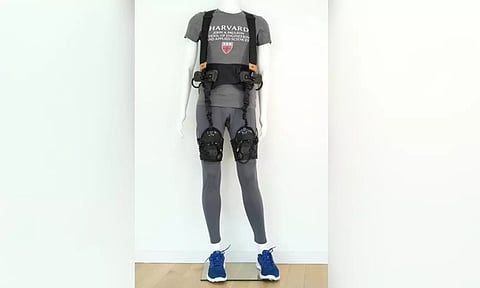

SAN FRANCISCO: Researchers from Harvard and Boston University have used a soft, wearable robot to help a person living with Parkinson’s walk without freezing.
As explained by the researchers, freezing is one of the most common and debilitating symptoms of Parkinson’s disease, a neurodegenerative disorder that affects more than nine million people globally.
When individuals with Parkinson’s disease freeze, they suddenly lose the ability to move their feet, often mid-stride, resulting in a series of staccato stutter steps that get shorter until the person stops altogether.
According to the study published in the journal Nature Medicine, the robotic garment, worn around the hips and thighs, gives a gentle push to the hips as the leg swings, helping the patient achieve a longer stride.
“We found that just a small amount of mechanical assistance from our soft robotic apparel delivered instantaneous effects and consistently improved walking across a range of conditions for the individual in our study,” said Conor Walsh, co-corresponding author of the study.
The researchers spent six months working with a 73-year-old man with Parkinson’s disease, who -- despite using both surgical and pharmacologic treatments -- endured substantial and incapacitating freezing episodes more than 10 times a day, causing him to fall frequently.
After wearing the device, the patient was able to walk without any freezing indoors and with only occasional episodes outdoors. He was also able to walk and talk without freezing, a rarity without the device, the researchers noted.
"The suit helps me take longer steps and when it is not active, I notice I drag my feet much more. It has really helped me, and I feel it is a positive step forward. It could help me to walk longer and maintain the quality of my life," the participant told researchers.
In addition, the researchers mentioned that the device could also be used to better understand the mechanisms of gait freezing, which is poorly understood.